
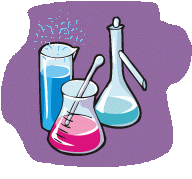

Some experiments, which can be conducted by children of age 8 to 12 under supervision
This page describes some interesting experiments, most of which can be conducted by children themselves. The children can produce quite a mess during these experiments, but it's non-toxic and non-corrosive. Even if the children ingest small amounts (e.g. by stuff, sticking on their hands), this is of no concern. Some other experiments on this page are best conducted as a demonstration for younger children, but children of age 12+ can conduct these experiments as well.
For each of the experiments an age indicator is given. Of course, this indicator only must be regarded as a guideline for the 'average' child. For each individual child, the parents/supervisors must assess the suitability of an experiment.
Let children wear goggles if they are allowed to handle the chemicals themselves. If a chemical comes into the eyes, then immediately rinse with water.
![]()
![]() Required
chemicals are given by each of the individual experiments below.
Required
chemicals are given by each of the individual experiments below.
![]() Required
equipment:
Required
equipment:
-
beakers, long drink glass, preferably transparent
-
pieces of paper
-
(tip) brushes
-
flower sprayer
-
test tubes
-
pipettes
![]() Safety:
Safety:
-
When children are allowed to perform the experiments themselves, then things can get quite messy (shampoo, liquids, stains), but no toxic or corrosive compounds are used. When performed outside and when the children wear old clothes, then these experiments can be conducted by the children themselves and they are a guarantee for a lot of fun. Always assure that there is some form of supervision. This is even more important when a group of children is doing the experiments!
-
Assure that children do not eat or drink the mixtures they make. Also, during the experiments, the children should not have drinks or food nearby.
![]() Disposal:
Disposal:
-
All materials can be flushed down the drain
![]()
Volcano with colors
Required chemicals:
-
sodium bicarbonate
-
vinegar (acetic acid, at most 5% by weight)
-
shampoo, or even better, bath foam
-
color dyes (water paint or food coloring)
Required age: 8
![]() Take
some shampoo, bath foam, or dish washing liquid, and mix with some water. Also
mix in some colorful paint or dyes.
Take
some shampoo, bath foam, or dish washing liquid, and mix with some water. Also
mix in some colorful paint or dyes.
![]() Take a
few spoons of sodium bicarbonate and add to the shampoo/dye/water mixture.
Take a
few spoons of sodium bicarbonate and add to the shampoo/dye/water mixture.
![]() Pour
some vinegar on the mixture. Watch the formation of a lot of foam.
Pour
some vinegar on the mixture. Watch the formation of a lot of foam.
If the experiment is conducted under a cone (e.g. a funnel with a wide opening), then a real volcano-like effect with 'lava' running along the outside of the cone, can be observed.
![]()
Making 'blood'
Required chemicals:
-
ferric chloride or ammonium ferric sulfate
-
ammonium thiocyanate
-
dilute hydrochloric acid
Required age: 12
![]() In a
test tube pour 2 to 3 ml of water and add a 2 drops of
dilute hydrochloric acid. In this dissolve a small spatula of ferric chloride or
ammonium ferric sulfate. Dissolving the solid takes a few minutes. The solution
has a yellow/brown color.
In a
test tube pour 2 to 3 ml of water and add a 2 drops of
dilute hydrochloric acid. In this dissolve a small spatula of ferric chloride or
ammonium ferric sulfate. Dissolving the solid takes a few minutes. The solution
has a yellow/brown color.
![]() In
another test tube pour 2 to 3 ml of water and add a small spatula full of
ammonium thiocyanate. Dissolve this chemical, such that a clear colorless
solution is obtained.
In
another test tube pour 2 to 3 ml of water and add a small spatula full of
ammonium thiocyanate. Dissolve this chemical, such that a clear colorless
solution is obtained.
![]() Add the
liquids to each other. When this is done an intensely colored red liquid is
obtained. This liquid really looks like blood.
Add the
liquids to each other. When this is done an intensely colored red liquid is
obtained. This liquid really looks like blood.
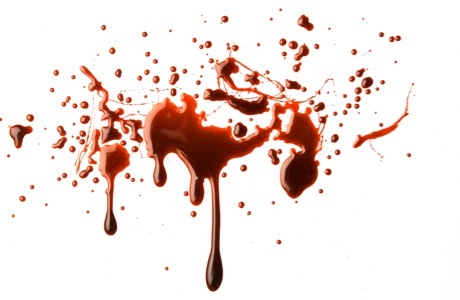
Avoid getting this liquid in your clothes, the stains are hard to remove.
![]() It can
be quite shocking to have a test tube filled with this 'blood' and showing this
to other people. But the liquid is less dangerous and nasty than it looks like,
in fact it hardly is toxic, just beware of the stains.
It can
be quite shocking to have a test tube filled with this 'blood' and showing this
to other people. But the liquid is less dangerous and nasty than it looks like,
in fact it hardly is toxic, just beware of the stains.
![]()
Making foam of 'blood'
Required chemicals:
-
ferric chloride or ammonium ferric sulfate
-
ammonium thiocyanate
-
sodium bicarbonate
-
dilute hydrochloric acid (10% HCl by weight)
Required age: 12
![]() Take 30 ml of dilute hydrochloric acid, also 30 ml of water
and dissolve a spatula full of ferric chloride or ammonium ferric sulfate in the
dilute acid. This gives a clear yellow solution, which contains approximately 5%
hydrochloric acid and a small amount of ferric ions.
Take 30 ml of dilute hydrochloric acid, also 30 ml of water
and dissolve a spatula full of ferric chloride or ammonium ferric sulfate in the
dilute acid. This gives a clear yellow solution, which contains approximately 5%
hydrochloric acid and a small amount of ferric ions.
![]() In
a glass jar put one tablespoon full of sodium bicarbonate. Add a small spatula
full of ammonium thiocyanate to the white powder as well and by stirring with a
plastic or glass rod (do not use a metal rod) mix the powdered sodium
bicarbonate with the crystals of ammonium thiocyanate.
In
a glass jar put one tablespoon full of sodium bicarbonate. Add a small spatula
full of ammonium thiocyanate to the white powder as well and by stirring with a
plastic or glass rod (do not use a metal rod) mix the powdered sodium
bicarbonate with the crystals of ammonium thiocyanate.
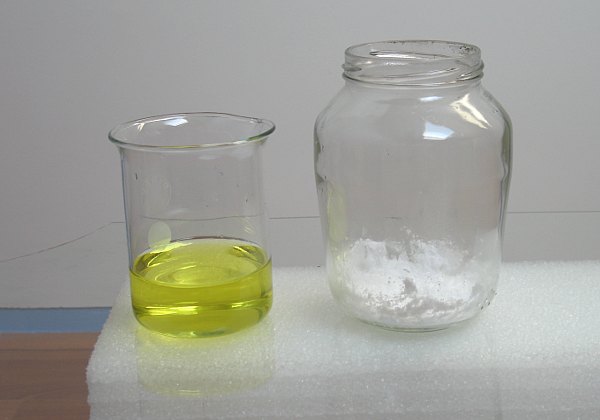
![]() Quickly
pour the yellow solution on the white powder and step back. Do this experiment
outside or on a big table which can be cleaned easily, because a big mess of
foam and splashes of red liquid are produced.
Quickly
pour the yellow solution on the white powder and step back. Do this experiment
outside or on a big table which can be cleaned easily, because a big mess of
foam and splashes of red liquid are produced.
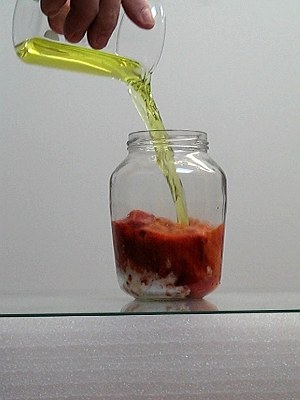

This is a really spectacular experiment. There also is a video showing the spectacular rising of the foam: red foam (download size is appr. 4 MByte).
The resulting liquid is not toxic, but it produces nasty stains when it comes in contact with clothes.
![]()
Ejection of a plume of foam
Required chemicals:
-
sodium bicarbonate
-
vinegar (acetic acid, at most 5% by weight)
-
shampoo, or even better, bath foam
-
age 12: hydrochloric acid (< 10% by weight)
Required age: 8
![]() Take a
glass beaker, preferably with a narrow opening (an erlenmeyer is suitable).
Take a
glass beaker, preferably with a narrow opening (an erlenmeyer is suitable).
![]() Pour in some shampoo, dilute with water four to five times
and add a spoonful of sodium bicarbonate.
Pour in some shampoo, dilute with water four to five times
and add a spoonful of sodium bicarbonate.
![]() Pour in a lot of vinegar at once. A volcano-like effect can
be observed, sometimes with foam ejected into the air.
Pour in a lot of vinegar at once. A volcano-like effect can
be observed, sometimes with foam ejected into the air.
Required age: 12
![]() A
better effect is obtained when dilute hydrochloric acid (5 to 10% HCl by weight)
is poured in quickly. This can result in fast ejection of a plume of foam.
Heights of 50 cm are not uncommon. This should not be carried out by
young children, it must be done as demo. Children of age 12 can do the
experiment themselves, but they must be instructed to quickly withdraw as soon
as the acid is added. They also must wear goggles in case the plume of foam hits
their face. The plume is not really dangerous for the skin and simply should be
rinsed away, but it should not get into the eyes!
A
better effect is obtained when dilute hydrochloric acid (5 to 10% HCl by weight)
is poured in quickly. This can result in fast ejection of a plume of foam.
Heights of 50 cm are not uncommon. This should not be carried out by
young children, it must be done as demo. Children of age 12 can do the
experiment themselves, but they must be instructed to quickly withdraw as soon
as the acid is added. They also must wear goggles in case the plume of foam hits
their face. The plume is not really dangerous for the skin and simply should be
rinsed away, but it should not get into the eyes!
The spills can be cleaned up safely by adding solid sodium bicarbonate to the spills. When this is done, then the spills can be mopped up. Perform this experiment outside or in a bath tub.
![]()
Bubbling and fizzling
Required chemicals:
-
sodium bicarbonate (BEWARE: If the eating-experiment is done, then be really sure that sodium bicarbonate is used and not sodium carbonate).
-
citric acid
-
age 12: sugar
Required age: 8
![]() Mix a
teaspoon full of sodium bicarbonate and a teaspoon full of citric acid. Exact ratio is not critical.
Take an approximate 1 : 1 ratio.
Mix a
teaspoon full of sodium bicarbonate and a teaspoon full of citric acid. Exact ratio is not critical.
Take an approximate 1 : 1 ratio.
![]() Add water to part of the mixture. This results in strong
expansion of the volume and a lot of fizzling.
Add water to part of the mixture. This results in strong
expansion of the volume and a lot of fizzling.
Required age: 12
![]() This mixture also is used in certain sweets, so-called
napoleon bonbons. Take 1 part of citric acid, 1 part of sodium bicarbonate
and mix this with one part of sugar (crushed crystals or powdered sugar). Putting a small amount of this
mix of three compounds in
the mouth is very impressive. The mix has a strong refreshing and sparkling
taste. Do not take more than one teaspoon of the mix.
This mixture also is used in certain sweets, so-called
napoleon bonbons. Take 1 part of citric acid, 1 part of sodium bicarbonate
and mix this with one part of sugar (crushed crystals or powdered sugar). Putting a small amount of this
mix of three compounds in
the mouth is very impressive. The mix has a strong refreshing and sparkling
taste. Do not take more than one teaspoon of the mix.
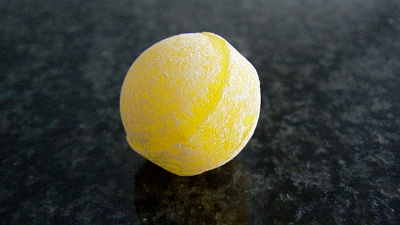
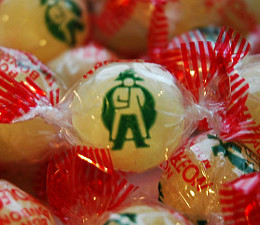
![]() Disadvantage of doing this
experiment is that children may be made to think that chemicals can be eaten.
For this set of chemicals, this is true, but this is a rare exception. For
(especially young) children, it may be hard to understand that this is a rare
exception and that in general chemicals should be considered toxic.
Disadvantage of doing this
experiment is that children may be made to think that chemicals can be eaten.
For this set of chemicals, this is true, but this is a rare exception. For
(especially young) children, it may be hard to understand that this is a rare
exception and that in general chemicals should be considered toxic.
![]() You have to be absolutely sure that the correct chemicals are taken in this
eating-experiment! Especially sodium bicarbonate and sodium carbonate can
easily be exchanged. The latter definitely should not be taken internally!
You have to be absolutely sure that the correct chemicals are taken in this
eating-experiment! Especially sodium bicarbonate and sodium carbonate can
easily be exchanged. The latter definitely should not be taken internally!
![]()
Colors appearing and disappearing (red/pink)
Required chemicals:
-
phenolphthalein
-
sodium carbonate
-
vinegar
Required age: 10
![]() Add a
few drops of a solution of phenolphthalein in alcohol to a beaker of water. Only
one or two drops are needed for 100 ml of water. Stir the water, such that the
phenolphthalein is mixed thoroughly in the water.
Add a
few drops of a solution of phenolphthalein in alcohol to a beaker of water. Only
one or two drops are needed for 100 ml of water. Stir the water, such that the
phenolphthalein is mixed thoroughly in the water.
![]() Prepare
a solution of sodium carbonate. Take a spatula full of sodium carbonate and
dissolve this in a few ml of water (in a test tube). This can be
handled fairly safely by most children, but if they spill this on
their skin, let them wash away with some water. Assure that no solution of
sodium carbonate comes into the eyes!
Prepare
a solution of sodium carbonate. Take a spatula full of sodium carbonate and
dissolve this in a few ml of water (in a test tube). This can be
handled fairly safely by most children, but if they spill this on
their skin, let them wash away with some water. Assure that no solution of
sodium carbonate comes into the eyes!
![]() Carefully add the solution of sodium carbonate to the water with the
phenolphthalein indicator. Beautiful pink/purple clouds are formed in the water.
Carefully add the solution of sodium carbonate to the water with the
phenolphthalein indicator. Beautiful pink/purple clouds are formed in the water.
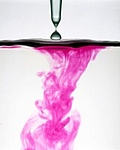
![]() Add some vinegar and stir. The solution becomes colorless
again..
Add some vinegar and stir. The solution becomes colorless
again..
![]()
Colors with red cabbage
Required chemicals:
-
red cabbage
-
hydrochloric acid
-
vinegar
-
dishwashing soap
-
ammonia
-
sodium hydroxide
Required age: 12
![]() Cut a
few leafs of red cabbage in small parts and boil for a while in a small amount
of water and keep the liquid with the blue/purple color of the red cabbage. This
step of boiling the red cabbage must be done in advance and should not be done
by children.
Cut a
few leafs of red cabbage in small parts and boil for a while in a small amount
of water and keep the liquid with the blue/purple color of the red cabbage. This
step of boiling the red cabbage must be done in advance and should not be done
by children.
![]() Put some
of the liquid in 5 test tubes and add the following to the liquid in each of the test
tubes:
Put some
of the liquid in 5 test tubes and add the following to the liquid in each of the test
tubes:
- hydrochloric acid
- white vinegar
- wash dishing soap
- ammonia
- solution of sodium hydroxide
This results in 5 different colors. It is remarkable that the dye in the red cabbage can give such different colors at different pH.
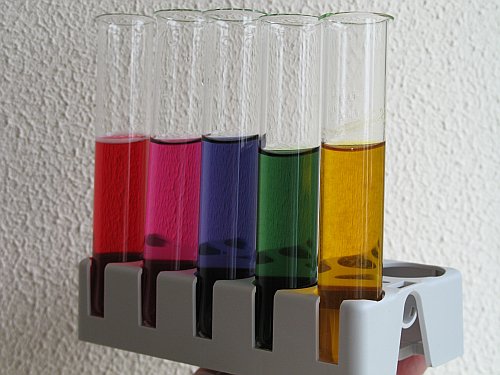
The colors are as follows:
- hydrochloric acid → red
- white vinegar → pink
- wash dishing soap → blue/purple
- ammonia → green
- solution of sodium hydroxide → yellow
![]() Keep in mind that sodium hydroxide is very corrosive to the skin and will
permanently damage the eyes. At any cost avoid getting sodium hydroxide in the
eyes, use goggles! If sodium hydroxide comes in contact with the skin,
immediately rinse with a lot of water, until the slippery feeling disappears.
Keep in mind that sodium hydroxide is very corrosive to the skin and will
permanently damage the eyes. At any cost avoid getting sodium hydroxide in the
eyes, use goggles! If sodium hydroxide comes in contact with the skin,
immediately rinse with a lot of water, until the slippery feeling disappears.
Hydrochloric acid and ammonia at the given concentrations can be safely handled by children of age 12, but if some of this comes on the skin, then rinse away with some water.
![]()
Colors appearing and disappearing (blue)
Required chemicals:
-
ferric chloride or ammonium ferric sulfate
-
potassium ferrocyanide (a.k.a. potassium hexacyanoferrate(II))
-
vinegar
-
sodium carbonate
-
sodium bisulfate
Required age: 8
![]() Dissolve
a very small amount of ferric chloride or ammonium ferric sulfate (e.g. 100 mg in 1 liter of water) and add
a few ml of vinegar. The
solution is pale yellow/brown, almost colorless. At this low concentration, the
liquid can be handled safely by children (age 8+). Preparation of this liquid
must be done by children of age 12 or older or by a supervisor.
Dissolve
a very small amount of ferric chloride or ammonium ferric sulfate (e.g. 100 mg in 1 liter of water) and add
a few ml of vinegar. The
solution is pale yellow/brown, almost colorless. At this low concentration, the
liquid can be handled safely by children (age 8+). Preparation of this liquid
must be done by children of age 12 or older or by a supervisor.
![]() Also prepare a low concentration solution of potassium
ferrocyanide (e.g. 100 mg per liter). Despite the 'cyanide' in the name of this
chemical, it is perfectly safe, especially at this low concentration. The
cyanide is bound very strongly to the iron, such that children can safely play
around with this dilute solution (it is not more toxic than water paints or
colored pencils).
Also prepare a low concentration solution of potassium
ferrocyanide (e.g. 100 mg per liter). Despite the 'cyanide' in the name of this
chemical, it is perfectly safe, especially at this low concentration. The
cyanide is bound very strongly to the iron, such that children can safely play
around with this dilute solution (it is not more toxic than water paints or
colored pencils).
![]() Let the children mix both liquids. The liquid becomes blue.
Let the children mix both liquids. The liquid becomes blue.
![]() If a solution of 1% sodium carbonate is added, then the blue
color disappears again and the liquid becomes light brown and somewhat turbid.
If a solution of 1% sodium carbonate is added, then the blue
color disappears again and the liquid becomes light brown and somewhat turbid.
![]() Ferrocyanide and ferric chloride are non-toxic at the concentrations, used here.
These chemicals, especially ferric chloride, however, can stain clothes and the
mix of these two chemicals gives a deep blue stain. Do not let children
of age 8 experiment with the solid chemicals or concentrated solutions! Children
of age 12 or older can be allowed to prepare the solutions as mentioned above.
Ferrocyanide and ferric chloride are non-toxic at the concentrations, used here.
These chemicals, especially ferric chloride, however, can stain clothes and the
mix of these two chemicals gives a deep blue stain. Do not let children
of age 8 experiment with the solid chemicals or concentrated solutions! Children
of age 12 or older can be allowed to prepare the solutions as mentioned above.
Required age: 10
There are nice variations on this experiment. One nice variation is to dissolve 100 mg of potassium ferrocyanide in 25 ml of water and let the children paint their names on white paper with this almost colorless 'ink'. Let the pieces of paper dry. With 25 ml of this ink, many children can write their name on a piece of paper.
A solution of 1 gram of ferric chloride in 500 ml of water and 20 ml of vinegar is put in a flower sprayer and the liquid is sprayed finely over the paper. The written texts at once appear.
After the experiment, the flower sprayer should be cleaned well. This can be done by putting in some vinegar, spraying away this vinegar and next putting in clean water and spraying away this water. The cleaning of the flower sprayer should be done by a supervisor if this has to be used for other purposes after this experiment.
Required age: 12
![]() Dissolve a spatula full of potassium hexacyanoferrate(II) in
100 ml of water and put this water in a beaker. Add 10 ml of colorless vinegar
to this beaker of water and stir such that all is well mixed.
Dissolve a spatula full of potassium hexacyanoferrate(II) in
100 ml of water and put this water in a beaker. Add 10 ml of colorless vinegar
to this beaker of water and stir such that all is well mixed.
![]() In a
test tube dissolve a small spatula of ammonium ferric sulfate (not ferric
chloride) and a small spatula of sodium bisulfate in a few ml of water.
In a
test tube dissolve a small spatula of ammonium ferric sulfate (not ferric
chloride) and a small spatula of sodium bisulfate in a few ml of water.
The picture below shows the solution in the test tube and the solution in the water. Both solutions are very pale yellow/brown, almost colorless.
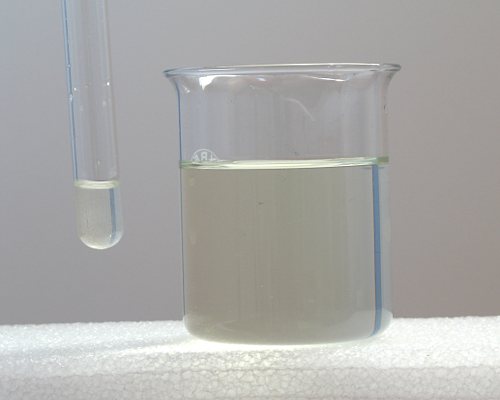
![]() Carefully drip a few drops of the solution from the test tube into the
beaker. This gives a spectacular display of blue 'ink' sinking to the bottom!
Carefully drip a few drops of the solution from the test tube into the
beaker. This gives a spectacular display of blue 'ink' sinking to the bottom!
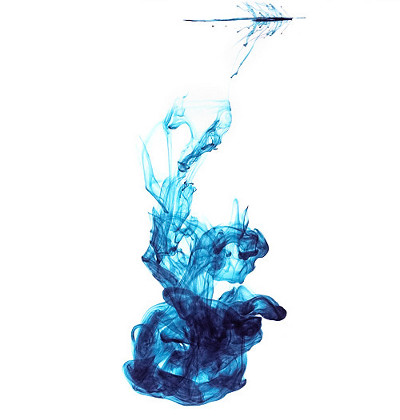
This video demonstrates the effect: blue cloud (download size appr. 3.5 MByte)
![]() Pour the
rest of the solution from the test tube into the beaker and stir. This results
in formation of a very dark blue liquid, almost like ink. A video demonstrates
this effect:
stirring
of blue liquid (download size appr. 2.3 MByte)
Pour the
rest of the solution from the test tube into the beaker and stir. This results
in formation of a very dark blue liquid, almost like ink. A video demonstrates
this effect:
stirring
of blue liquid (download size appr. 2.3 MByte)
![]() Add a
teaspoon full of sodium carbonate to the beaker and stir. The dark blue color
disappears and a pale brown and somewhat turbid liquid is obtained. This final
effect also is available on video:
disappearance of blue color (download size appr. 4.4 MByte).
Add a
teaspoon full of sodium carbonate to the beaker and stir. The dark blue color
disappears and a pale brown and somewhat turbid liquid is obtained. This final
effect also is available on video:
disappearance of blue color (download size appr. 4.4 MByte).
![]()
Discussion of results
![]() The main reaction, used in this set of experiments is
reaction of bicarbonate with acid.
The main reaction, used in this set of experiments is
reaction of bicarbonate with acid.
HCO3–(aq) + H+(aq) → CO2(g) + H2O
NaHCO3(s) + H+(aq) → CO2(g) + Na+(aq) + H2O
![]() The bubbles of carbon dioxide form a thick foam, when mixed
with soap or shampoo.
The bubbles of carbon dioxide form a thick foam, when mixed
with soap or shampoo.
![]() The red/pink color reaction is based on the acid/base
indicator phenolphthalein getting red at high pH and getting colorless at low pH.
The red/pink color reaction is based on the acid/base
indicator phenolphthalein getting red at high pH and getting colorless at low pH.
![]() The blood-red color reaction is based on the formation of a
thiocyanato complex of iron(III):
The blood-red color reaction is based on the formation of a
thiocyanato complex of iron(III):
Fe3+ + SCN– → [Fe:SCN]2+
The reaction equation only shows the addition of one thiocyanate ion, but multiple ions can be coordinated to the iron atom.
![]() The blue color reaction is based on the formation of prussian
blue (highly simplified reaction equation):
The blue color reaction is based on the formation of prussian
blue (highly simplified reaction equation):
K+ + Fe3+ + Fe(CN)64- → KFeFe(CN)6
The compound hydrolyses at high pH (again highly simplified reaction equation):
KFeFe(CN)6 + 3OH– → K+ + Fe(OH)3 + Fe(CN)64-